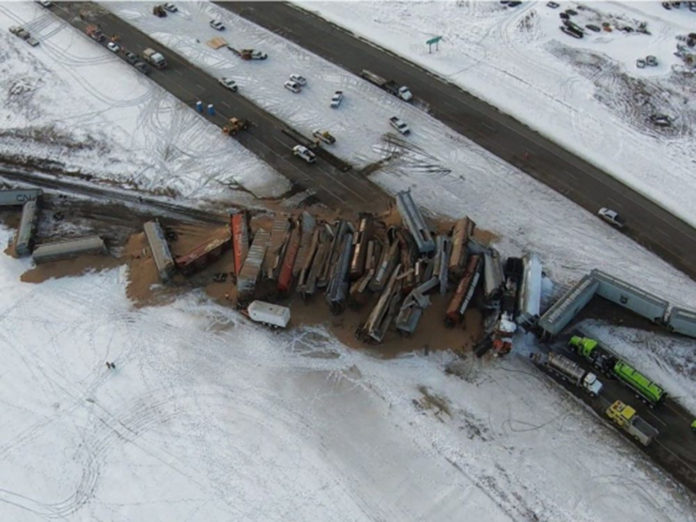
Investigators say a bolt hole crack, a missing rail head, and old railway tracks manufactured in 1953 led to a 2019 train derailment that occurred on Highway 11 between Warman and Saskatoon.
The Transportation Safety Board of Canada (TSB) released findings from their investigation on Thursday. They traced the failure to a missing joint between two pieces of rail, which left a gap in the rail surface. That gap grew larger and larger as rail cars rolled over it, causing the 27th car in the train to derail on Jan. 22, 2019.
Investigators said the fracture that broke the rail likely originated in a bolt hole, even though no cracks were detected during an inspected less than a month before. The report’s author, Ken Miller, wrote that the track condition likely deteriorated within weeks.
The damaged section of the track had been repaired roughly two months before using rail manufactured in 1953. Miller wrote that the rail was inspected before being used, but likely had lower fracture toughness due to the era it was built in. The rest of the surrounding track was manufactured in 1980.
The report notes that there were plans to upgrade the crossing where the accident took place.
A TSB media release said the derailment shows the risks of using those old rail to repair deteriorating sections of track.
“There is a risk that rail defects will develop and progress to failure faster than they can be detected by the rail flaw inspection regime,” reads the statement. “Prior to the occurrence, the Warman Subdivision had seen an increase in traffic volume, exceeding a regulatory threshold thereby requiring more frequent inspections. However, the frequency of inspection had not been increased.
“The investigation found that if in-year traffic volumes increase beyond the threshold, and the frequency of inspections is established only during the subsequent annual traffic volume review, developing safety defects in the track may not be detected, increasing the risk of failure and accidents.”
The CN Railway Company freight train was travelling southward at around 31 mph at around 9:25 a.m. on Jan. 22, 2019 when it derailed. The mid-train locomotive and 29 grain cars were involved in the wreck, which piled up in the northbound lanes of divided Highway 11. There were no dangerous goods involved and no injuries. The mid-train locomotive briefly caught fire, but was quickly extinguished.
The train was destined for Edmonton, and included three locomotives and more than 155 covered hopper cars loaded with grain.

